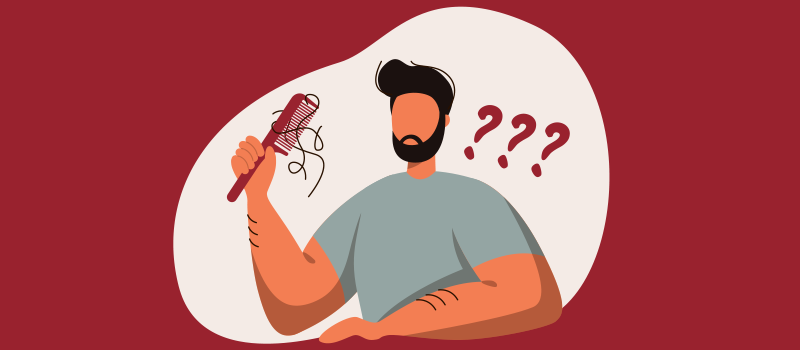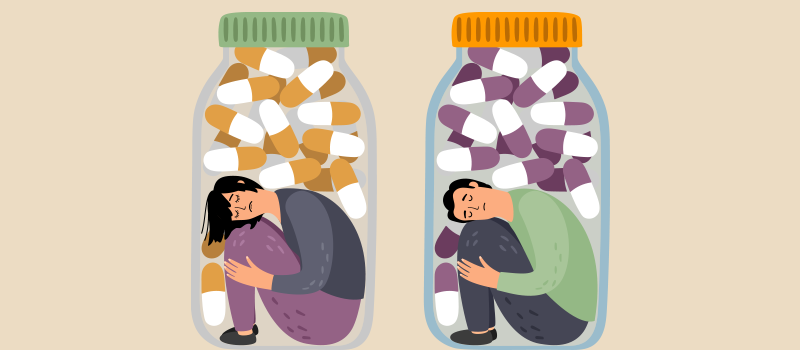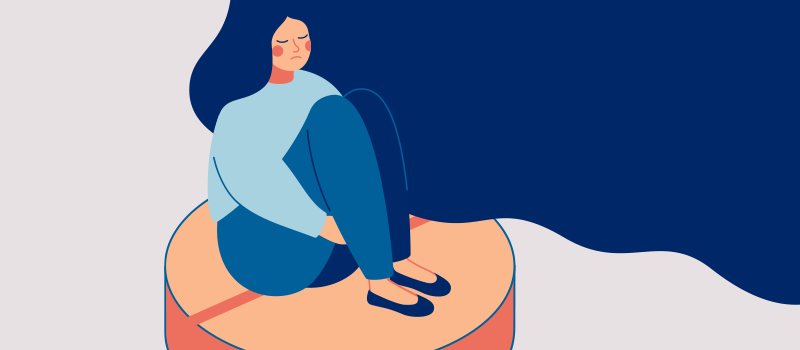What’s the Buzz
The Bee Healthy Blog
Which is better for hair loss: minoxidil or finasteride?

Hair loss on the scalp is a common problem that affects both men and women. Minoxidil and finasteride are two prescription drugs that can help slow the progress of hair loss and promote the regrowth of lost hair. Continue reading to learn more about these medications for hair loss treatment and find out how they promote hair growth. We’ll also discuss which is a better hair loss treatment—finasteride vs. minoxidil.
What is male pattern baldness?
Male pattern baldness (androgenetic alopecia) is the loss of scalp hair in men. It typically occurs in older men due to changes in hormone levels over a man’s lifetime. Around 50 million men in the United States have male pattern baldness. By the age of 50, one in two men has some degree of hair loss. Although it is a normal part of aging, hair loss can be psychologically distressing for many men. Certain medications like finasteride and minoxidil can be used to treat androgenetic alopecia. Female pattern baldness occurs in older women and can also be treated with medications.
Can finasteride and minoxidil regrow hair?
One of the treatments for balding is a hair transplant. However, this is a surgical procedure and carries some risks. Men who are looking for less invasive hair loss treatments have the option of using minoxidil and finasteride, two prescription medications that promote hair growth. Female pattern baldness in women can also benefit from minoxidil.
Minoxidil
Minoxidil (brand name Rogaine) is available over-the-counter. It comes in the form of shampoos, foams, and serums. Minoxidil is a vasodilator, meaning it widens the blood vessels to increase blood flow to the scalp. As a result, minoxidil increases the supply of nutrients to the hair follicles and makes them stronger. This property of minoxidil is believed to play an important role in its ability to cause hair growth.
Minoxidil is safe for use in both men and women. It takes an average of 6-12 months to see the growth of new hair. The medication must be taken indefinitely for continued benefits, meaning, discontinuing minoxidil can lead to hair loss again. Common side effects of minoxidil include dizziness, fainting, and fast heart rate. Burning or stinging at the application site on the scalp is one of the expected side effects of this medication.
Finasteride
Finasteride (brand name Propecia) is a prescription medication that is available as a pill. It was originally used to shrink an enlarged prostate gland in men. However, it was discovered that finasteride stops the male hormone DHT (a type of testosterone) from attacking the hair follicles, thus slowing hair loss. Oral finasteride is prescribed to adult men only and is not recommended for use by women or individuals under the age of 18. Finasteride is teratogenic, meaning it can cause congenital abnormalities in the baby if taken during pregnancy.
Improvements in hair growth are seen after a few months of finasteride treatment. Treatment must be continued to maintain the effect. In other words, the balding process starts again if oral finasteride is discontinued. Potential side effects of finasteride include nipple discharge, breast pain, testicle pain, trouble with urination, and decreased libido. You should inform the prescribing physician if you experience any of these side effects.
Can I use minoxidil and finasteride together?
Both finasteride and minoxidil are FDA-approved treatments for hair loss. You can use both medications (Propecia and Rogaine) together to improve hair growth. Studies have shown that taking finasteride and minoxidil together is not only safe but also beneficial for hair loss. This is because each medication has a different mechanism of action––minoxidil increases blood flow to the hair follicles to promote the growth of new hair whereas finasteride protects the hair follicles from the effects of DHT (testosterone hormone).
You can use finasteride and minoxidil as a compounded topical product. Combining topical minoxidil and oral finasteride can improve male pattern baldness. It is important to get professional medical advice before starting either of these drugs.
It is worth noting that minoxidil and finasteride do not work for other forms of hair loss such as hair loss due to stress, hypothyroidism (underactive thyroid), chemotherapy, postpartum hair thinning, or medication side effects.
Finasteride vs minoxidil: Which is better?
According to experts at Harvard University, finasteride is more effective than minoxidil for the treatment of hair loss. Up to two-thirds of people who use finasteride for male pattern baldness report good results in terms of new hair growth.
However, it is worth noting that a treatment plan that includes finasteride for hair growth can prove to be expensive long term because it is necessary to continue taking the medication for continued benefits. Compared to a monthly cost of around $10-15 for minoxidil, the monthly cost of finasteride treatment is approximately $50-75. Also, finasteride can cause rare sexual side effects such as erectile dysfunction (impotence) and decreased libido.
Both finasteride and minoxidil are FDA-approved treatments for promoting hair growth on the scalp; they have been proven to be an effective treatment for hair loss when used according to healthcare professional’s medical advice. If you do not get satisfactory results after a year of treatment with minoxidil and finasteride, a hair transplant may be an option.
References:
1. https://www.medicalnewstoday.com/articles/68077
2. https://patient.info/medicine/finasteride-for-male-pattern-baldness-propecia-aindeem
3. https://www.ncbi.nlm.nih.gov/pmc/articles/PMC4314881/
4. https://www.health.harvard.edu/newsletter_article/Hair_today_more_hair_tomorrow











SOCIAL